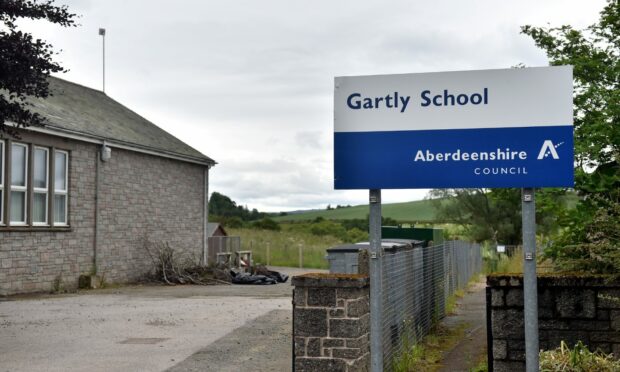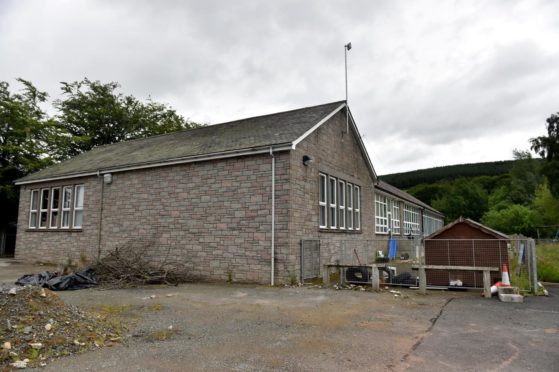A community has vowed to continue fighting for a mothballed north-east primary school.
Gartly Primary has been shut for more than two years after an oil leak which badly contaminated the land.
All pupils and nursery children were transferred to Rhynie School while Aberdeenshire Council considered the future of Gartly.
The school’s official roll has fallen from 26 to eight since then, and at a private meeting held earlier this year it was decided to mothball the school in August.
Parents were furious the decision was made behind closed-doors, and say there is still a “sense of anger” and a determination to get the local authority to reconsider opening the school.
Last week, an emotional ceremony was held at the school’s temporary site at Rhynie. The Gartly staff and pupils were piped from the building to go their separate ways.
‘Frustration’ for parents
Charlotte Whitley, the mother of a Gartly pupil, said: “On behalf of all the parents I want to say a big thank you to all of the Gartly staff. They have been amazing throughout everything to do with the school and dealing with Covid on top of that.
“We’re all leaving a lovely place which is very emotional. We will keep fighting on behalf of the community before the next meeting, but it does feel like the end of the journey.”
Aberdeenshire Council has argued that mothballing the school is the best decision right now for educational purposes, but parents believe its “closure through the back door”.
From August, all Gartly staff will be relocated to different schools, but several still do not know where they will be placed.
Earlier this month, the Marr area committee considered various options for the school, and after discussing the importance of local schools in small communities, recommended the school be reinstated.
Their recommendation will be passed to the education committee to consider later this year.
Mrs Whitley added: “We appreciate the committee taking our side, but there’s still a big sense of anger. Whatever happens, someone has to take responsibility for what has happened.
“It doesn’t feel like progress has been made or that they are really listening to the parents. We haven’t had any option but to go along with it.
“We’re not being unreasonable and know that it is expensive, but there has been a lack of transparency about the money that will need to be spent.
“We’ll keep fighting, but need to focus on the kids as they move to their new schools after the summer holidays.”
‘A difficult decision’
Councillor John Latham, chairman of the Marr Area Committee, said: “Considering the future of any school is always a difficult decision.
“I would like to offer assurance that no stone has been left unturned during what has been a comprehensive process to determine the best outcome for pupils’ parents and carers, teachers and the wider community.”
A full options appraisal took place on June 15 with consideration for early years, transport, finances and timescale.
The committee also considered feedback from various community consultations – which was strongly in favour for reinstating the school.
It was decided that this option does remain viable, but only if contamination from the leak is removed from the ground. This would take three months, plus another year to reinstate the building.
The committee decided that merging with Rhynie, which requires no further work, or merging with Kennethmont School, three miles from Gartly, also remain viable.
Splitting the catchment area to more than one school will also still be considered.
Building a new school for Gartly would only be considered if the land cannot be decontaminated.
A long journey
Already £450,000 has been spent excavating, processing and trying to dispose of the contaminated soil found under the boiler room and main hall, but without complete success.
Work on the school was abandoned in June 2019 due to costs and nothing has been completed since, including tests to check the contamination levels.
It is estimated that a further £872,000 will need to be spent on demolishing part of the building, carrying out further excavations and reinstating it on the current site – taking the total bill to £1.3million

